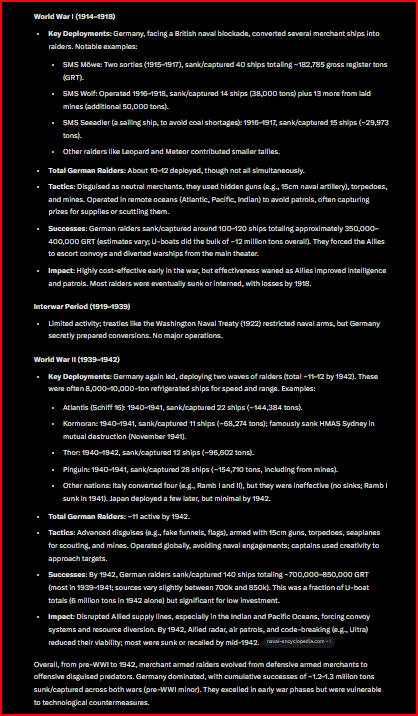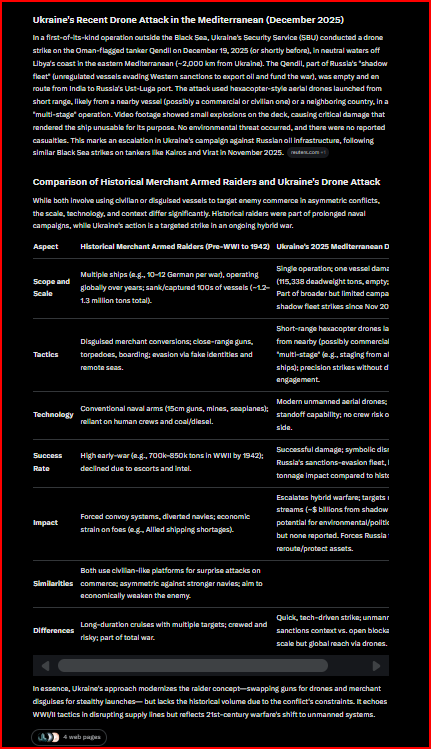The Armed Forces of Ukraine have launched a up to 25K, or small NATO Corps sized, incursion into the Kursk Oblast that is moving between 7 & 10 km a day.
AFU Bde have between 4 to 9 battalions per brigade with 6 Bn as average, so ~18 Bn seem involved.
AFU's Strategic raid🧵
1/



AFU Bde have between 4 to 9 battalions per brigade with 6 Bn as average, so ~18 Bn seem involved.
AFU's Strategic raid🧵
1/



US made and AFU crewed Stryker & Humvees are in Russia as a part of an AFU multi-domain - that is, air and ground - offensive.
A RuAF conscript regiment -- doing animal labor logistics - was thrown at the assault and shattered. Chechens ran.
Russia's reserves are airpower.
2/
A RuAF conscript regiment -- doing animal labor logistics - was thrown at the assault and shattered. Chechens ran.
Russia's reserves are airpower.
2/

What has been particularly interesting has been the further demonstration of the floating 10 km "FPV Motor Transport Kill Bubble" that extend around AFU Drone-ground teams that has picked off a pair of RuAF tank transporter convoys behind the border.
3/
3/
https://x.com/TrentTelenko/status/1820896052565737590
And this "FPV Motor Transport Kill Bubble" is now going for big game.
That is, Ukrainian FPVs are targeting Russian railway engines on the Kursk Oblast rail lines.
4/
That is, Ukrainian FPVs are targeting Russian railway engines on the Kursk Oblast rail lines.
4/

The last two days of NASA FIRMS heat maps shows hot spots of AFU & RuAF artillery fires that seem to confirm Ukrainian claims of major ground gains.
Ukrainian BUK SAM launchers and FPV interceptors have, so far, kept the VKS jets & choppers off the backs AFU ground units.
5/


Ukrainian BUK SAM launchers and FPV interceptors have, so far, kept the VKS jets & choppers off the backs AFU ground units.
5/


This is a video of a Russian attack helicopter over Kursk Oblast being destroyed by a Ukrainian FPV interceptor.
The same could happen to a US Army AH-64 Apache in the near future.
6/
The same could happen to a US Army AH-64 Apache in the near future.
6/
https://x.com/bayraktar_1love/status/1821082705750049166
While some are claiming we are seeing the beginnings of a Ukrainian strategic envelopment.
There was a lack of Russian social media comment on this AFU force before this attack that would reflect a major strategic logistical build up.
7/
There was a lack of Russian social media comment on this AFU force before this attack that would reflect a major strategic logistical build up.
7/
https://x.com/LozzieDuff/status/1820815089978544311
And the distances involved - 150 km - from Kursk to Vovchansk are operational-strategic in scope.
This makes me think we are looking at a Ukrainian strategic level raid aimed at placing Russia in a nested series of logistical dilemma's in order to give AFU the initiative.
8/
This makes me think we are looking at a Ukrainian strategic level raid aimed at placing Russia in a nested series of logistical dilemma's in order to give AFU the initiative.
8/

Where that 1st logistical dilemma that is making itself felt is the Anti-Access Area Denial (A2AD), jammer & FPV based AFU air superiority over Kursk below 3,000 feet/914 meters.
We saw this at #Krynky in 2023 and we are seeing it again now in Kursk.
9/
We saw this at #Krynky in 2023 and we are seeing it again now in Kursk.
9/
https://x.com/TrentTelenko/status/1722381038637166617
It's the reach of the Ukrainian Baba Yaga with a more than 25 km radius of action while dropping heavy munitions, or FPV's while acting as a radio relay, that is going to be a horror show for the RuAF.
Three TM-62 mines dropped from one will cut a railway line.
And Russia can't risk scarce railway repair crews inside the Baba Yaga bubble for fear those crews will be targeted.
10/

Three TM-62 mines dropped from one will cut a railway line.
And Russia can't risk scarce railway repair crews inside the Baba Yaga bubble for fear those crews will be targeted.
10/


In WW2 the 2nd Allied Tactical Air Force would sweep areas before British Commonwealth armored columns penetrating Nazi lines.
Typhoons were armed with 8 each RP-3 rockets and P-47's with 500lb bombs.
AFU is replaying these tactics using drones.
11/


Typhoons were armed with 8 each RP-3 rockets and P-47's with 500lb bombs.
AFU is replaying these tactics using drones.
11/


Wherever Ukrainian ground forces are present, you have to draw a 25 km bubble ahead of them to account for their drone interdiction of major transport infrastructure and 10 km for killing Russian motor transport.
Given Kursk's rail network...opps😈⬇️
12/
Given Kursk's rail network...opps😈⬇️
12/
https://x.com/Schizointel/status/1821050767907635631
Russia's real logistical dilemma is they are on exterior versus interior lines of communications with an inferior sized ground force.
The Russians were too confident in the paralytic fear of the Biden NSC. The fools.
The NSC is now paralyzed between fear of Moscow & fear of political crucifixion on multiple fronts.
13/
(H/T @WarintheFuture)
The Russians were too confident in the paralytic fear of the Biden NSC. The fools.
The NSC is now paralyzed between fear of Moscow & fear of political crucifixion on multiple fronts.
13/
(H/T @WarintheFuture)

The analytical loons on X buying into the "Russia Strong™️" narrative about RuAF having infantry superiority ignored the fact that RuAF counted on the Biden Administration keeping Ukraine out of Russia.
Reflexive Control infowar doctrine was used as a RuAF strategic economy of force measure to get local numerical superiority for offensives.
So RuAF didn't honor the threat of AFU's larger ground forces across from the Kursk Oblast.
14/
Reflexive Control infowar doctrine was used as a RuAF strategic economy of force measure to get local numerical superiority for offensives.
So RuAF didn't honor the threat of AFU's larger ground forces across from the Kursk Oblast.
14/

This only worked as long as Ukraine played by US rules. It looks like the Biden Admin refusal to allow ATACMS strikes on Russian airfields while VKS withdrew was the last straw.
The lack of Russian reserves means Kherson Oblast is the only source of formed military units, unless RuAF gives up the Vovchansk offensive.
GMLRS made this a problem in the summer of 2022. (Map⬇️)
ATACMS ranges on all rail lines in occupied Ukraine. It will take more than a week to get RuAF units from Kherson to Kursk by rail.
15/
(H/T @FreudGreyskull)
The lack of Russian reserves means Kherson Oblast is the only source of formed military units, unless RuAF gives up the Vovchansk offensive.
GMLRS made this a problem in the summer of 2022. (Map⬇️)
ATACMS ranges on all rail lines in occupied Ukraine. It will take more than a week to get RuAF units from Kherson to Kursk by rail.
15/
(H/T @FreudGreyskull)

Russia has to gather a lot of scarce motor transport to move ground units out of Kherson.
Then put them, and especially their heavy equipment, on rail outside of GMLRS range and take the risk of ATACMS and partisan attacks in Southern Ukraine to get them to Kursk.
16/
Then put them, and especially their heavy equipment, on rail outside of GMLRS range and take the risk of ATACMS and partisan attacks in Southern Ukraine to get them to Kursk.
16/

The complete destruction of the Russian railway ferry fleet was, in retrospect, a strategic level AFU shaping operation for the current Kursk offensive
It is certain that Ukraine is waiting for a munitions train to approach the Kerch Straits bridge.
17/
It is certain that Ukraine is waiting for a munitions train to approach the Kerch Straits bridge.
17/
https://x.com/Schizointel/status/1815810327075852374
Being a WW2 Pacific historian specializing in electronic warfare, signals & logistics.
It makes you acutely aware that troops in transit are utterly useless for doing anything until they arrive, shake out and move from the port to battle.
Russia is doing that with trains.
18/
It makes you acutely aware that troops in transit are utterly useless for doing anything until they arrive, shake out and move from the port to battle.
Russia is doing that with trains.
18/

It isn't just moving the 100K troops RuAF needs to stabilized, & then start reducing the Kursk salient.
The ATACMS threat dispursed VKS jets needs munitions & fuel moved to support operations simultaneously, w/o forklifts & pallets.
Bombs on a train aren't on a flight line.
19/
The ATACMS threat dispursed VKS jets needs munitions & fuel moved to support operations simultaneously, w/o forklifts & pallets.
Bombs on a train aren't on a flight line.
19/

The Russian Railway monopoly is suffering a perfect storm of Western railway cassette bearing wear out, maintenance work force burnout, and administrative chaos between oligarchs owning rolling stock.
Now it is being over stressed by priority...
20/
t.me/vchkogpu/49636

Now it is being over stressed by priority...
20/
t.me/vchkogpu/49636

...military trains heading in every direction in Western Russia and occupied Ukraine at the same time.
It's almost like Ukraine is making a Russian economy suffering from rail transportation double pneumonia to do a 400 meter sprint in winter.😈
21/
It's almost like Ukraine is making a Russian economy suffering from rail transportation double pneumonia to do a 400 meter sprint in winter.😈
21/
https://x.com/TrentTelenko/status/1820599458159018007
I think the real objective of the AFU strategic raid into Kursk Oblast is to cause a systemic collapse of Russian railway system as a set up for a series of AFU offensives.
Like the one I predicted for September 2024.
22/22 End
Like the one I predicted for September 2024.
22/22 End
https://x.com/TrentTelenko/status/1817726673531400579
@threadreaderapp unroll please
• • •
Missing some Tweet in this thread? You can try to
force a refresh











